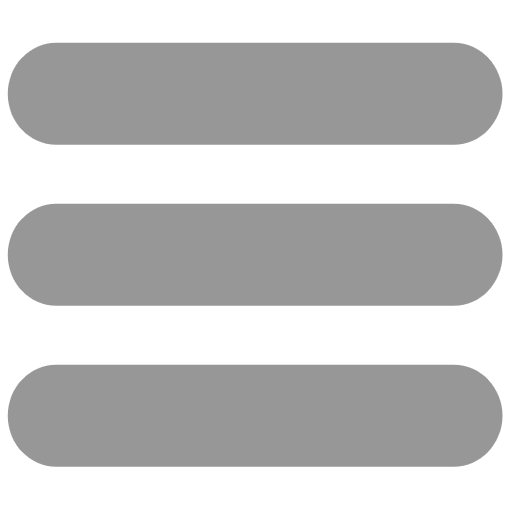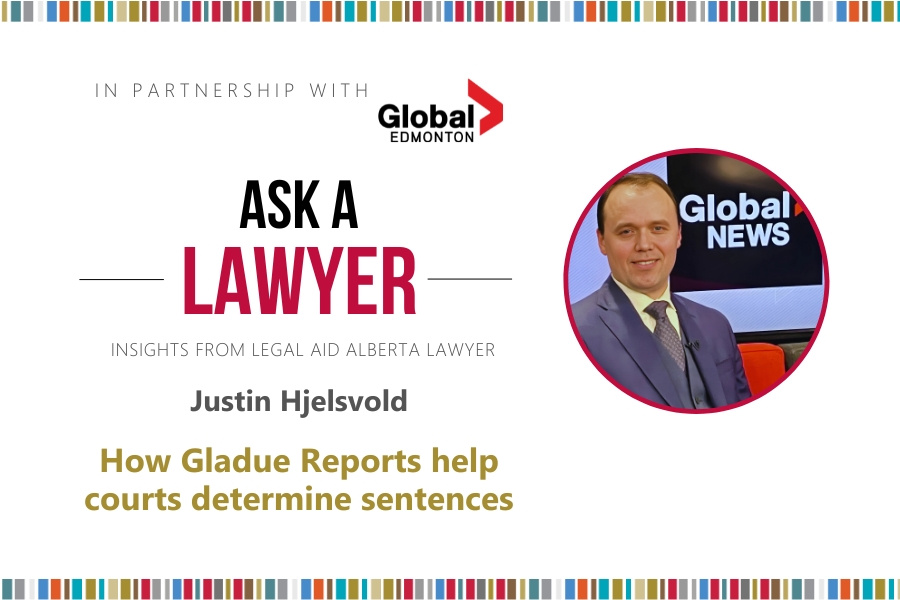The over representation of Indigenous people in the justice system has been well documented. A Government of Canada survey indicates that while Indigenous people make up five per cent of the total Canadian population, the number of Indigenous people in federal prisons is 21 per cent. That figure rises to an average of 42 per cent in provincial jails.
One way that courts can address this over representation is the use of Gladue reports – documents that chronicle the conditions and circumstances that led an Indigenous person to be before the courts. Legal Aid Alberta staff lawyer Justin Hjelsvold appeared on the Global Morning News Ask A Lawyer segment to explain how Gladue reports work.
Watch the segment (transcript below)
Transcript:
Vinesh Pratap: The over representation of Indigenous persons in the justice system is an ongoing challenge across Canada. One way courts can address this is the use of Gladue Reports. Now here to tell us how this works is Legal Aid Alberta staff lawyer Justin Hjelsvold. Justin thank you so much for being here.
Justin Hjelsvold: I’m glad to be here.
Pratap: I’m glad we’re talking about this because this is just one example of the complexities of the justice system. So talk to us about – you know, the over representation of Indigenous people in the justice system. What are we seeing right now?
Hjelsvold: Well Vinesh, it’s a serious problem and frankly, it’s getting worse. The Government of Canada did a couple of studies to try and keep track of this. In 2008 Indigenous people represented about 4.1 per cent of the total population of Canada and yet they were 20 per cent of everybody in federal institutions. In 2024 they checked again, and while Indigenous people were now five per cent of the population, they represented about 32 per cent of everybody in federal incarceration. And when you look at provincial jails it’s even worse, it’s somewhere around 42 per cent.
Pratap: OK so talk to us about the Gladue report. What is it, how does it work, and take us through the history behind that.
Hjelsvold: So a Gladue report is a broad-spectrum view of a person’s life, prepared by a professional writer. It’s meant to give the court a picture of the kind of obstacles that a person has faced in their life, both as a child and adult, with their family and their community. And the idea is to allow the Justice to create a fit and appropriate sentence for that person.
Pratap: So you know – how does it work? If someone identifies as Indigenous are they automatically put into that system? Take us through that process.
Hjelsvold: So, when someone is convicted, they have the right to ask for a Gladue report to be prepared. But often their lawyer will explain the process to them and, depending on the situation they’re in the middle of, they might not decide to prepare one. It could take some time to get it together, which can delay sentencing. And as you can imagine some of the stories that are being told are very difficult for people to share and it can be retraumatizing for the offender and their family – and so it has to be used judiciously.
Pratap: OK so when it comes to, you know, going through the process, the Gladue report is initiated (and) the judge gets all the details – how does that impact sentencing – but at the same time, how does that then play into rehabilitation, which is what the justice system is meant to serve and to do?
Hjelsvold: We aren’t allowed to treat offenders differently just on the basis of their race or background and nobody gets a discount on sentence. But if you look at the purpose of sentencing, there’s the offence but also the offender. What Parliament has legislated is that we pay particular attention to Indigenous offenders, and take a close look at their situation. Often they’re dealing with addiction, poverty, abuse in the home – and many of these things are the product of government action. And when we look at what we call culpability or responsibility for an offence. That’s narrowed in the case of many offenders, especially Indigenous ones, because the kinds of choices that they could make in their life were more limited because of all these obstacles that they had to face. Frankly, the courts find themselves in the position of trying to fix this problem but we’re at the end of the line.
Pratap: Right.
Hjelsvold: We need to be treating this as more of a society-wide problem where we are doing a better job of supporting Indigenous communities and families so that their young people can grow up in stable homes and they won’t find themselves in front of the court to begin with.
Pratap: We don’t want to deal with this from the back end – it has to go all the way from the beginning.
Hjelsvold: That’s right. So that’s where I think it starts – with young people.
Pratap: Yeah, it certainly does and with a society that wants to push for change. Justin, thank you so much for coming in and shedding some light about some of the complexities of the court system and it’s greatly appreciated.
Hjelsvold: Thanks for having me.
Pratap: And Legal Aid Alberta lawyers, they specialize in family law, child welfare, domestic violence, immigration and youth and adult criminal defence. And if you have a question for a lawyer you can send it to [email protected].


